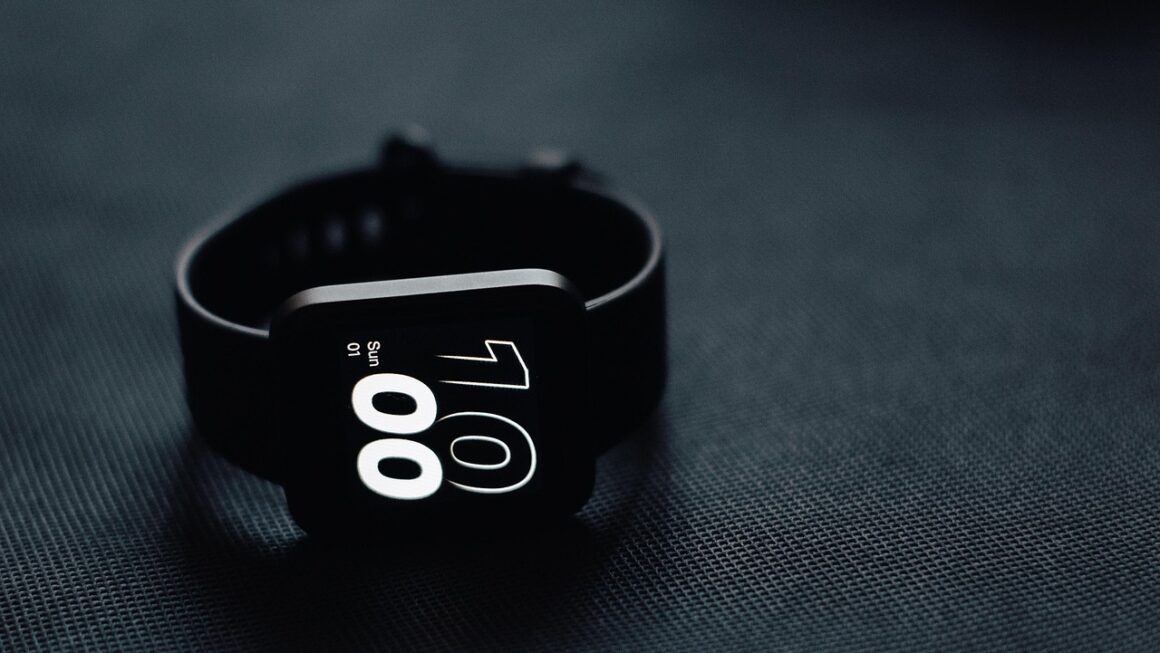Do you ever wonder how many steps you really take in a day, or how restful your sleep actually is? In today’s fast-paced world, understanding our health has become increasingly important, and health trackers have emerged as valuable tools to help us do just that. From sleek smartwatches to simple fitness bands, these devices offer a wealth of data about our bodies, empowering us to make informed decisions about our well-being. This blog post delves into the world of health trackers, exploring their functionalities, benefits, and how to choose the right one for your individual needs.
Understanding Health Trackers: What They Do and How They Work
What is a Health Tracker?
A health tracker is a wearable device designed to monitor and record various aspects of your physical activity, sleep patterns, and sometimes even vital signs. They use sensors like accelerometers, gyroscopes, and heart rate monitors to collect data. This data is then processed and presented to the user through a companion app or directly on the device’s screen.
- Example: A basic fitness band tracks your steps, distance traveled, calories burned, and sleep duration.
- Advanced Trackers: More sophisticated models might include GPS tracking, blood oxygen level monitoring (SpO2), electrocardiogram (ECG) capabilities, and even fall detection.
How Health Trackers Work
The core function of most health trackers relies on motion sensors and biometric data. Here’s a breakdown:
- Accelerometers: These measure movement and acceleration in three dimensions, allowing the tracker to count steps, estimate distance, and identify activity types (e.g., walking, running).
- Heart Rate Monitors: These typically use optical sensors (LEDs and light detectors) to measure heart rate by detecting changes in blood flow beneath the skin. Some use ECG technology for more accurate heart rate measurements.
- GPS: Some trackers include GPS receivers to track outdoor activities like running, cycling, and hiking.
- Gyroscopes: Assist in determining orientation and movement, improving the accuracy of step counting and activity recognition.
- Data Synchronization: The data collected by the tracker is usually synchronized wirelessly (via Bluetooth or Wi-Fi) with a smartphone or computer, where it can be analyzed and visualized in an app.
The Evolution of Health Trackers
Health trackers have come a long way from simple pedometers. Early models primarily focused on step counting, but modern devices offer a wide array of features. Technological advancements have led to more accurate sensors, longer battery life, and more sophisticated algorithms for data analysis. The integration of health trackers with smartphone apps and cloud-based platforms has also enhanced their usability and functionality.
Benefits of Using a Health Tracker
Increased Awareness of Activity Levels
One of the primary benefits of health trackers is that they provide a clear picture of your daily activity levels. Many people underestimate how little they move throughout the day, especially if they have sedentary jobs.
- Example: A tracker might reveal that you only take 3,000 steps per day, prompting you to increase your activity level to reach the recommended 10,000 steps.
- Actionable Takeaway: Setting personalized goals for steps, distance, or active minutes can help you stay motivated and achieve your fitness objectives.
Improved Sleep Tracking and Analysis
Health trackers can monitor your sleep patterns, including sleep duration, sleep stages (light, deep, REM), and sleep disturbances. This information can help you identify potential sleep problems and make lifestyle adjustments to improve sleep quality.
- Example: Discovering that you consistently have low deep sleep can prompt you to optimize your sleep environment or consult a doctor about potential sleep disorders.
- Actionable Takeaway: Experiment with different sleep schedules, optimize your bedroom environment (temperature, noise levels), and avoid caffeine or alcohol before bed to improve your sleep quality.
Enhanced Motivation and Goal Setting
The visual representation of your progress can be a powerful motivator. Seeing your step count increase or reaching your daily activity goal can provide a sense of accomplishment and encourage you to continue working towards your fitness goals.
- Example: Many trackers offer gamified features, such as badges, challenges, and social sharing, which can further enhance motivation.
- Actionable Takeaway: Set realistic and achievable goals, track your progress regularly, and reward yourself for reaching milestones.
Monitoring of Vital Signs and Health Metrics
Advanced health trackers can monitor vital signs such as heart rate, blood oxygen levels, and even ECG readings. This data can be valuable for tracking your overall health and identifying potential health issues.
- Example: Detecting a consistently elevated heart rate can prompt you to consult a doctor to rule out any underlying heart conditions.
- Actionable Takeaway: Use the data from your health tracker to track trends in your vital signs and discuss any concerns with your healthcare provider. Remember that health trackers are not medical devices and should not be used for self-diagnosis.
Choosing the Right Health Tracker
Identifying Your Needs and Goals
Before purchasing a health tracker, it’s essential to identify your specific needs and goals. Are you primarily interested in tracking your steps and sleep, or do you need advanced features like GPS tracking and heart rate monitoring?
- Questions to Ask Yourself:
What activities do you want to track?
What health metrics are important to you?
What is your budget?
Do you prefer a smartwatch or a fitness band?
Key Features to Consider
- Activity Tracking: Step counting, distance tracking, calorie burn estimation, activity recognition (walking, running, cycling, swimming).
- Sleep Tracking: Sleep duration, sleep stages (light, deep, REM), sleep disturbances.
- Heart Rate Monitoring: Continuous heart rate tracking, resting heart rate, heart rate variability.
- GPS: For tracking outdoor activities like running, cycling, and hiking.
- Battery Life: How long the tracker can operate on a single charge.
- Water Resistance: Important for swimming or activities in wet conditions.
- Smartphone Compatibility: Ensure the tracker is compatible with your smartphone’s operating system (iOS or Android).
- App Features: User-friendly interface, data visualization, goal setting, social sharing.
Popular Health Tracker Brands and Models
- Fitbit: Known for its user-friendly interface, comprehensive activity tracking, and social features. Popular models include the Fitbit Charge, Fitbit Inspire, and Fitbit Versa.
- Apple Watch: Offers a wide range of features, including activity tracking, heart rate monitoring, ECG capabilities, and smartphone integration.
- Garmin: Popular among athletes and fitness enthusiasts, offering advanced features like GPS tracking, detailed activity metrics, and training analysis. Popular models include the Garmin Forerunner, Garmin Fenix, and Garmin Venu.
- Samsung Galaxy Watch: Combines fitness tracking with smartwatch functionality, offering features like activity tracking, heart rate monitoring, sleep tracking, and smartphone notifications.
Reading Reviews and Comparisons
Before making a purchase, it’s important to read reviews and compare different models. Look for reviews from reputable sources and pay attention to user feedback regarding accuracy, reliability, and ease of use. Compare specifications, features, and prices to find the best tracker for your needs.
Maximizing the Use of Your Health Tracker
Setting Realistic Goals
Start by setting realistic and achievable goals. Don’t try to do too much too soon. Gradually increase your activity levels as you become more comfortable.
- Example: If you currently take 5,000 steps per day, aim to increase it to 6,000 or 7,000 steps per day over the next few weeks.
Regularly Monitoring Your Progress
Track your progress regularly and make adjustments to your goals as needed. Pay attention to trends in your data and identify areas where you can improve.
- Example: If you notice that you consistently have low deep sleep, experiment with different sleep strategies and track whether they make a difference.
Integrating with Other Apps and Services
Many health trackers can be integrated with other health and fitness apps, such as MyFitnessPal, Strava, and Google Fit. This allows you to consolidate your data and gain a more comprehensive view of your health and fitness.
Staying Consistent and Motivated
Consistency is key to achieving your health and fitness goals. Find ways to stay motivated and make using your health tracker a part of your daily routine.
- Tips for Staying Motivated:
Set reminders to track your activity and sleep.
Join online communities or fitness challenges.
Reward yourself for reaching milestones.
Find a workout buddy to exercise with.
Conclusion
Health trackers offer a valuable tool for gaining insights into our health and fitness. By tracking our activity levels, sleep patterns, and vital signs, these devices empower us to make informed decisions about our well-being. While choosing the right tracker and utilizing its features effectively requires careful consideration, the potential benefits of increased awareness, improved motivation, and enhanced goal setting make health trackers a worthwhile investment for anyone seeking to improve their overall health. Remember to consult with a healthcare professional for personalized advice and guidance.




